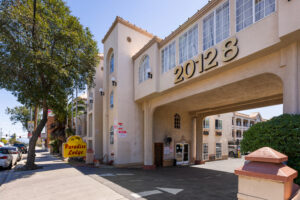Cost of Capital Drives 45% Drop in California Hotel Deals
Cost of Capital Drives 45% Drop in California Hotel Deals
Decline in 2023 Is Second Only to 2009
By Bryan Wroten
Hotel News Now
February 6, 2024 | 6:04 AM
California’s individual hotel sales dropped 45% year over year in 2023, surprising no one.
What did come as a bit of a surprise for Alan Reay, president of Atlas Hospitality Group — which produced its annual year-end California Hotel Sales Survey — is that the decline wasn’t deeper given that sales were down 53% halfway through the year.
It was during the second quarter of 2022 that interest rate increases kicked in, so Reay expected to see a bigger drop when comparing the remainder of the two years, he said.
The survey reports individual sales dropped from 483 in 2022 to 265 in 2023. Total dollar volume fell 56.3% to $3.75 billion. The year-end drop in dollar volume was the second largest in 15 years, with 2009 experiencing a 75% decrease.
The median price per room dipped 1.08% to $150,000, but it was still the second-highest median price per room that Atlas has recorded.
Performance Does Not Equal Value
Hotels are performing much better now than they were during the pandemic and early parts of the recovery, Reay said. That’s not enough, however, for buyers to see eye to eye with sellers on valuation.
It’s not really a reflection on the operations; it’s the cost of capital, he said. Hotels trade on a cap rate, and the cap rate is measured by the cost of money. It affects even those who are making an all-cash deal because they have to look at sales comparisons. The higher interest rates alone can drop a property’s valuation by millions.
“If I’m operating today, and my hotel is operating well, I’m not going to sell in today’s market because I’m used to what the prices were 12 to 18 months ago,” he said.
Sellers were able to command such high prices during the pandemic and recovery because of the combination of lower interest rates and a tremendous amount of built-up capital, Reay said. The wave of distress never materialized due to federal regulators allowing lenders to be more flexible, plus federal stimulus dollars were distributed to businesses and individuals.
“There was a tremendous amount of tax money pummeled into the economy so that when hotels reopened, especially in resort areas, the numbers went off the charts,” he said.
That built-up capital had to go somewhere, and when working through valuations, buyers looked to 2019 numbers to project performance and then based their pricing on that, Reay said. Today, buyers are looking at the past 12 months of performance and if data shows a performance drop for the past three months, they’ll calculate that out over the next 12 months.
“The short answer is that people from an investment standpoint, from a lending standpoint, are nowhere near as optimistic as they were right after COVID,” he said. “It’s ironic that that’s what happened. I don’t think anyone could have predicted it.”
2024 Expectations
The debt maturities coming due in 2024 will be a big driver of deals in California, but there are some things to keep in mind, Reay said.
Debt maturity on the commercial mortgage-backed securities side plays by a completely different set of rules, he said. Properties with distressed CMBS loans go to a special servicer that, in some cases, can hold on to them for several years and not do anything with them.
The regular commercial banks, however, face big penalties from the federal government if they carry anything in their books that is 30 days past due, he said. They then have to reserve against it.
There will be a lot of banks opting to sell loans next year, and that will be the first wave, Reay said. As those loans are bought, like the industry saw in 2009 and 2010, those may move toward foreclosure.
“In order for transactions to pick up, you’re going to see more distressed sales,” he said. “It’s loan maturities, because when you look at interest rates and loans that are coming due, in almost every single case, if the borrower wants to refinance, they’re going to have to come in with substantially more capital.”
The potential for three interest rates cuts has boosted optimism among investors, but it’s too soon to say what effect they would have.
Many of Atlas’ younger clients who haven’t been through industry cycles before have said they’re going to wait on refinancing or other decisions until the interest rates “go way back down,” Reay said. However, history shows that the days of 4% rates were unheard of, and the average for commercial loans was about 7.5% to 8%.
“My crystal ball isn’t better than anybody else’s, but I think if you’re waiting for a dramatic decrease in interest rates, are you banking on that?” he said. “I think that you’re going to have a big surprise that the big issue is inflation.”
Even if rates do come down, that doesn’t mean lenders will be as active as they were before, Reay said. They’re concerned about their risk and capacity, trying to make sure they have enough loans that are safe. They likely won’t be on the lookout for new loans.
More private lenders are coming into the marketplace, and there are more requests for preferred equity because refinancing means having to bring more capital, he said. That preferred equity comes with an interest rate of 15% to 17%, however, and that’s not sustainable.


